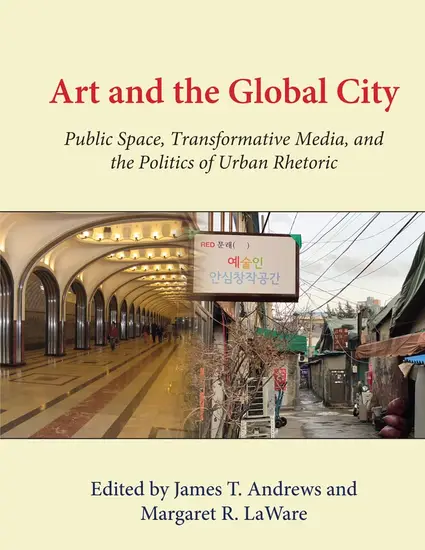
Contribution to Book
Deconstructing the Museum’s White Cube: Gregor Schneider’s Artistic and Discursive Interventions in Urban Space
Art and the Global City: Public Space, Transformative Media, and the Politics of Urban Rhetoric
(2022)
Abstract
Museums and artists increasingly play a pivotal role in shaping the experiential landscapes of urban culture. While museums (and iconic museum architecture) have not only become “anchors” for cultural tourism, real estate development, and the expansion of the creative economy, artists have created interventions in urban space and museum space that problematize distinctions or boundaries between studio space, museum space, exhibition space, and public space. This chapter examines projects by artist Gregor Schneider in global cities and museums that interrogate these conceptual, discursive, spatial, and institutional boundaries, but also challenge and confuse visitors’ museum experience by deconstructing the space for exhibiting and viewing art in the museum’s “white cube.”
Projects such as Steindamm (Hamburger Kunsthalle, 2003), Weiβe Folter (White Torture) (K 21 Düsseldorf, 2007), and Kunstmuseum (Kunstmuseum Bochum, 2014) radically alter and occupy the spaces in which art is displayed and how visitors experience those spaces, i.e., as they move from the public space surrounding the museum into the museum space. For these projects, Schneider has opened new entryways in the exterior walls of museums and created labyrinthine tunnels and passages leading from public spaces into and through museums. These interventions not only intersect with discourses related to the politics of the museum and social justice they also destabilize the museum’s institutional authority as a space for reflection and knowledge, which is associated with the exhibition space of the white cube. Works installed in public places, such as Cube Hamburg (2007) or Bondi Beach, 21 Beach Cells (2007) also reflect interventions in cityscapes that challenge urban cultural politics related to social justice. Schneider’s End of the Museum–12 Stations for the ART PROJECT KOBE 2019: TRANS- (2019) references many of the preceding projects by foregrounding the museum as a dystopian metaphor for the global city, where the museum itself is absent, and the city becomes a signifier and site of urban decay.
Disciplines
Publication Date
2022
Editor
James T. Andrews and Margaret R. LaWare
Publisher
Peter Lang
Series
Urban Communication
ISBN
978- 1- 4331- 8167- 2
Publisher Statement
Art and the Global City brings together a host of academics (communication specialists, sociologists, historians and cultural theorists) who seek to expand the notion of a "communicative city" by looking at the role that art and public culture play in the rapidly expanding global landscape. Spanning four continents (North America, Europe/Eurasia, Asia, and Australia) and multiple cities (from Chicago to Singapore, Moscow, Seoul, and Melbourne), these case studies focus the reader’s attention to the evolution of art in public spaces and the rhetorical power of new artistic visions and conglomerations in the urban landscape.
Citation Information
Mark W. Rectanus. "Deconstructing the Museum’s White Cube: Gregor Schneider’s Artistic and Discursive Interventions in Urban Space" New YorkArt and the Global City: Public Space, Transformative Media, and the Politics of Urban Rhetoric Vol. 8 (2022) Available at: http://works.bepress.com/mark_rectanus/14/
